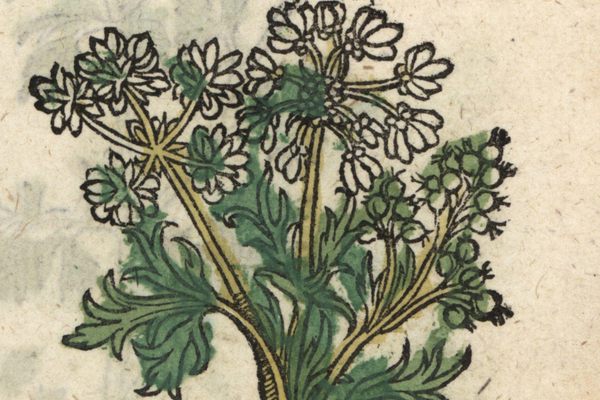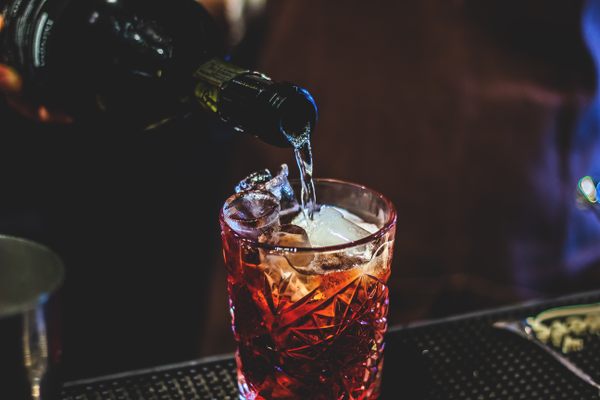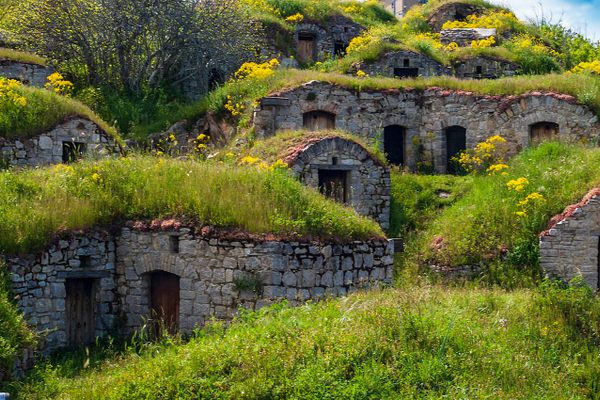This Italian City Is Obsessed With Squash
Ferrara is the place for all things pumpkin.
Pumpkin spice lattes may be few and far between in Italy, but for those gourd-lovers seeking to make the most of the season, there are few places more festive in fall than the northern Italian town of Ferrara.
Located halfway between Venice and Florence, Ferrara was a center of art and innovation during the Renaissance as the home of the Este Court, a noble family whose wealth and power helped form the foundation of Italian culture centuries before the country unified. The Estensi were insatiable epicureans and the frequent hosts of elaborate feasts. Their chefs, Cristoforo di Messisbugo and Giovanni Battista Rossetti, became trendsetters in their own right and could be considered among the world’s first celebrity chefs.
During this time, crops from the so-called New World flooded Europe with ingredients previously unknown there. It’s still unclear if Christopher Columbus brought squash to Europe in 1493 from his first expedition to the Americas, but by the mid-1500s, the home gardens of people living across the Italian peninsula were populated with pumpkins. In Ferrara, pumpkins grew especially well thanks to the fertile soil and hospitable climate of the Po Valley, which remains the heart of the nation’s agriculture today. Before long, people began referring to residents of Ferrara as magnazoca, or “pumpkin eaters.”

“The term is used to ridicule the people of Ferrara—usually by the people of Bologna, or others who live along the borders of our province,” says Massimo Cappelli, a Ferrara native and owner of Panificio Cappelli, a bakery in the historic city center.
Despite the derisive nature of this nickname, pumpkins remain integral to the identity of the people of Ferrara. From September to February, the length of the pumpkin harvest, visitors to the city will find squash in a wide array of dishes in restaurants and bakeries around town, from plates of creamy pumpkin risotto to crusty loaves of savory pumpkin bread to sugar cones topped with scoops of pumpkin gelato. Throughout Emilia-Romagna you can try a piadina romagnola (the region’s traditional flatbread) infused with pumpkin. It is only in Ferrara, however, that it’s possible to taste the pumpkin cake known as tenerina di zucca.
Baked in a single, short layer and topped only with a dusting of powdered sugar, the tenerina di zucca is humble in appearance, but its delicately sweet flavor and light-as-air texture are pure perfection. The cake is made all the more special for its ephemeral existence, available only in Ferrara and for only a few weeks of the year.
For Cappelli, however, it is another local speciality that is the pumpkiny pride of the town: cappellacci di zucca. “This pumpkin-filled pasta is the principal dish of the cuisine of Ferrara,” says Cappelli. “Its tradition can be followed back hundreds of years to the Este Court.”
In 2016, the European Union awarded cappellacci di zucca Protected Geographical Indication status. Since then, true cappellacci di zucca can be prepared only within the province of Ferrara, using a fresh pasta dough filled with pureed squash, grated cheese, breadcrumbs, and nutmeg. The pasta must be formed into the shape of a farmer’s straw hat, known as a caplaz in the local dialect.

The dough recipe was first published in Messisbugo’s cookbook, Banchetti composizione di vivande e apparecchio generale, in 1549, while the complete recipe with the pumpkin filling that is still used today is credited to Rosseti’s Ricettario dello scalco, written in 1584.
This tradition continues at Panificio Cappelli, where the pasta is made entirely by hand. The main difference is that this dish, which was once reserved for the elite to eat on special occasions, is now available to everyone year round. Tamara Savran, a Ukrainian immigrant, masterfully makes Panificio Cappelli’s cappellacci, producing about ten kilos (22 pounds) per week in the summer and as much as fifty kilos (around 110 pounds) weekly in cooler months, especially close to the winter holidays.
Among the citizens of Ferrara, there is much discussion about whether cappellacci di zucca should be served with meat ragu or butter and sage. But when it comes to the filling, there is no debate. The star ingredient must be zucca violina—violin squash, named for its elongated curvy shape like that of the musical instrument. As with butternut squash, zucca violina belongs to the Cucurbita moschata species of squash. (The two varieties look similar, but the zucca violina’s peel is bumpy, rather than smooth.) While the earliest traces of this squash species date back 10,000 years to Central America, zucca violina was likely first cultivated in Ferrara in the 16th century.

In the 21st century, Panificio Cappelli sources zucca violina from second-generation pumpkin farmer Daniele Braghini, who has land not far outside Ferrara’s medieval walls. “My father was the first in our family to grow pumpkins, but for our own use at home,” says Braghini. “When I took over the farm, I grew our production to supply those who make fresh pasta.”
Braghini’s farm was spared from the worst of the devastating floods that swept through Emilia-Romagna in May, but his fields underwent six significant hail storms in the spring and summer of this year, resulting in a loss of 30 percent of his pumpkins. Extreme weather patterns due to climate change pose a profound threat to the zucca violina as well as other Italian culinary and cultural traditions.
Yet as long as pumpkins continue to grow in the fields, the citizens of Ferrara will continue to gather for their annual Sagra della Zucca e del suo Cappellaccio Ferrarese I.G.P., a festival that celebrates pumpkins and pasta. Instead of trick-or-treating on Halloween, locals spend the final weekend of October in the tiny town of San Carlo, about 12 miles from Ferrara. There, everyone feasts on cappellacci di zucca, savoring the taste of this seasonal tradition.
Gastro Obscura covers the world’s most wondrous food and drink.
Sign up for our regular newsletter.


























Follow us on Twitter to get the latest on the world's hidden wonders.
Like us on Facebook to get the latest on the world's hidden wonders.
Follow us on Twitter Like us on Facebook